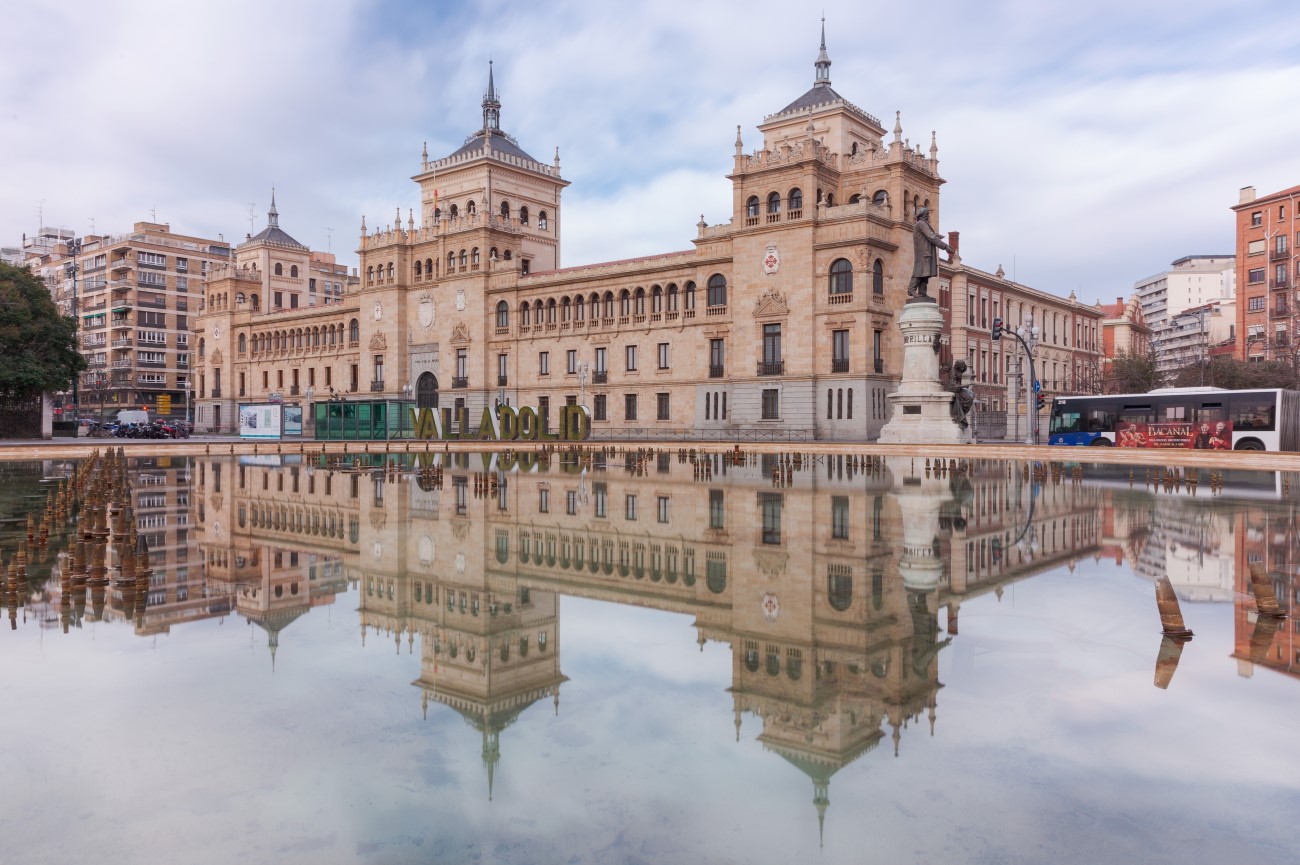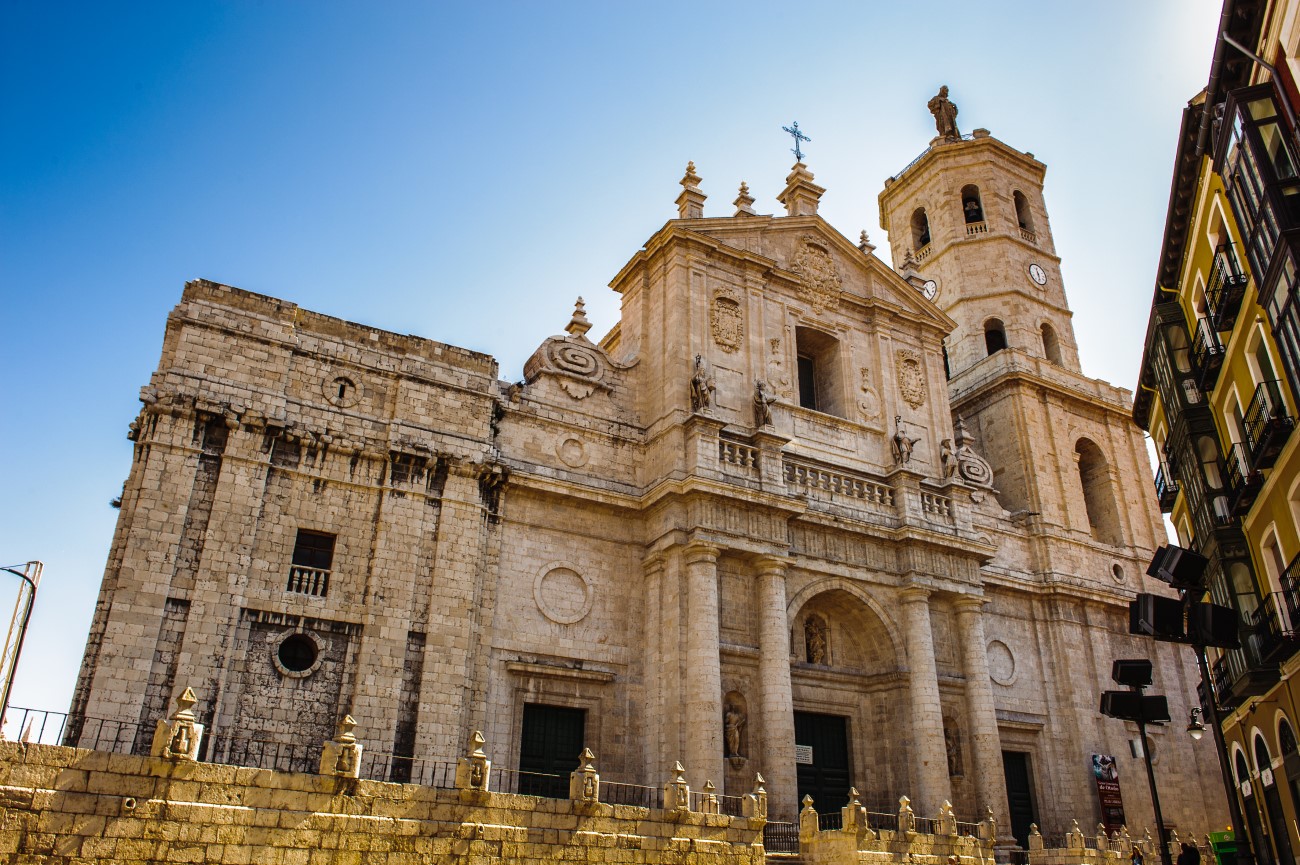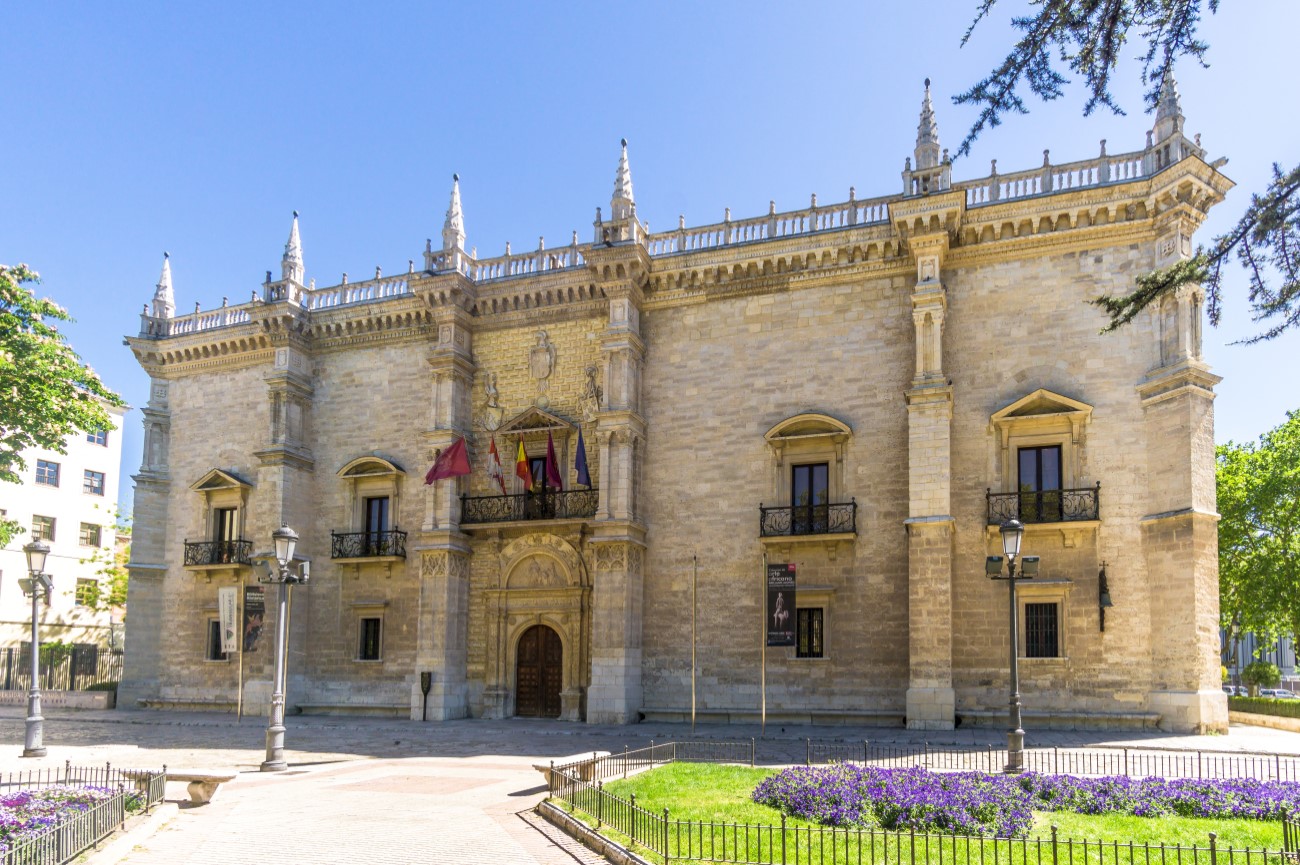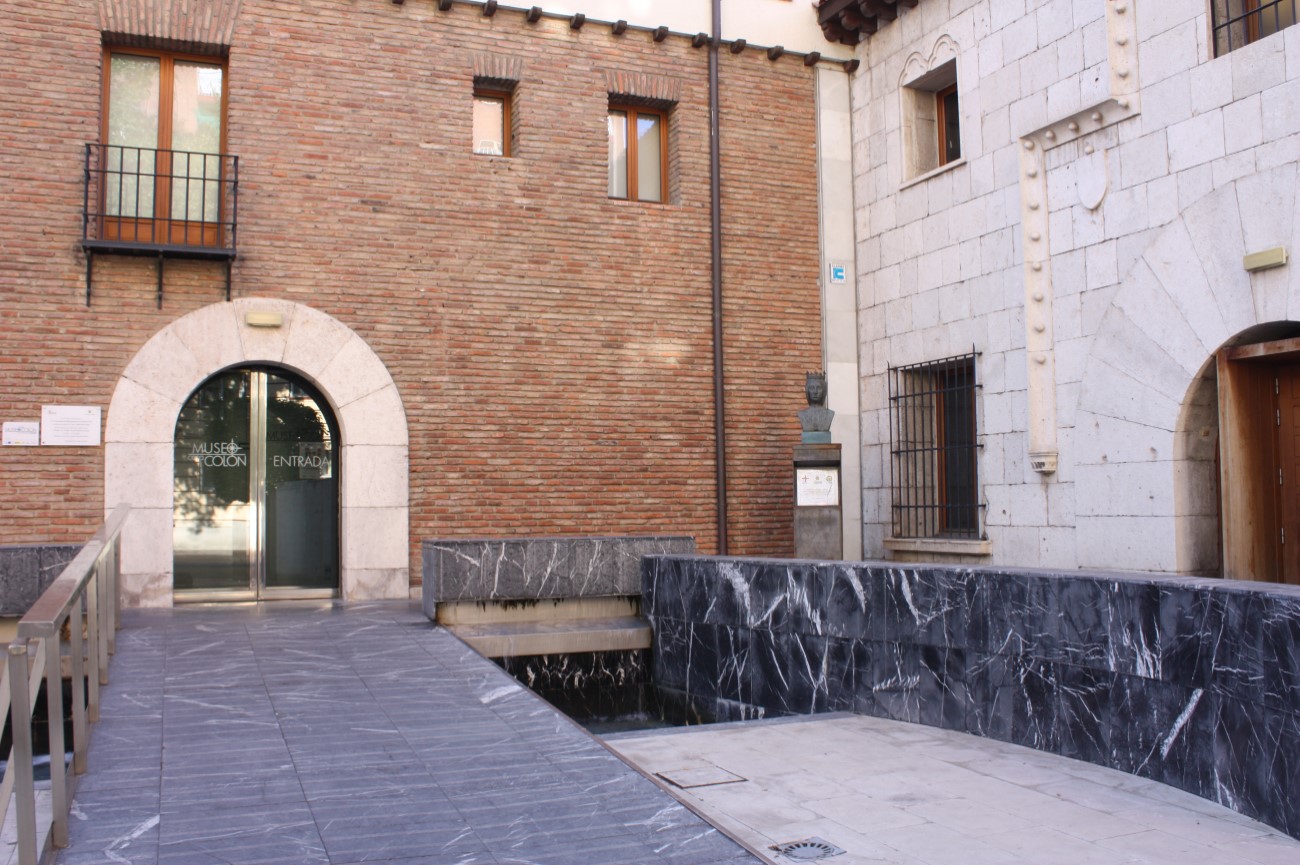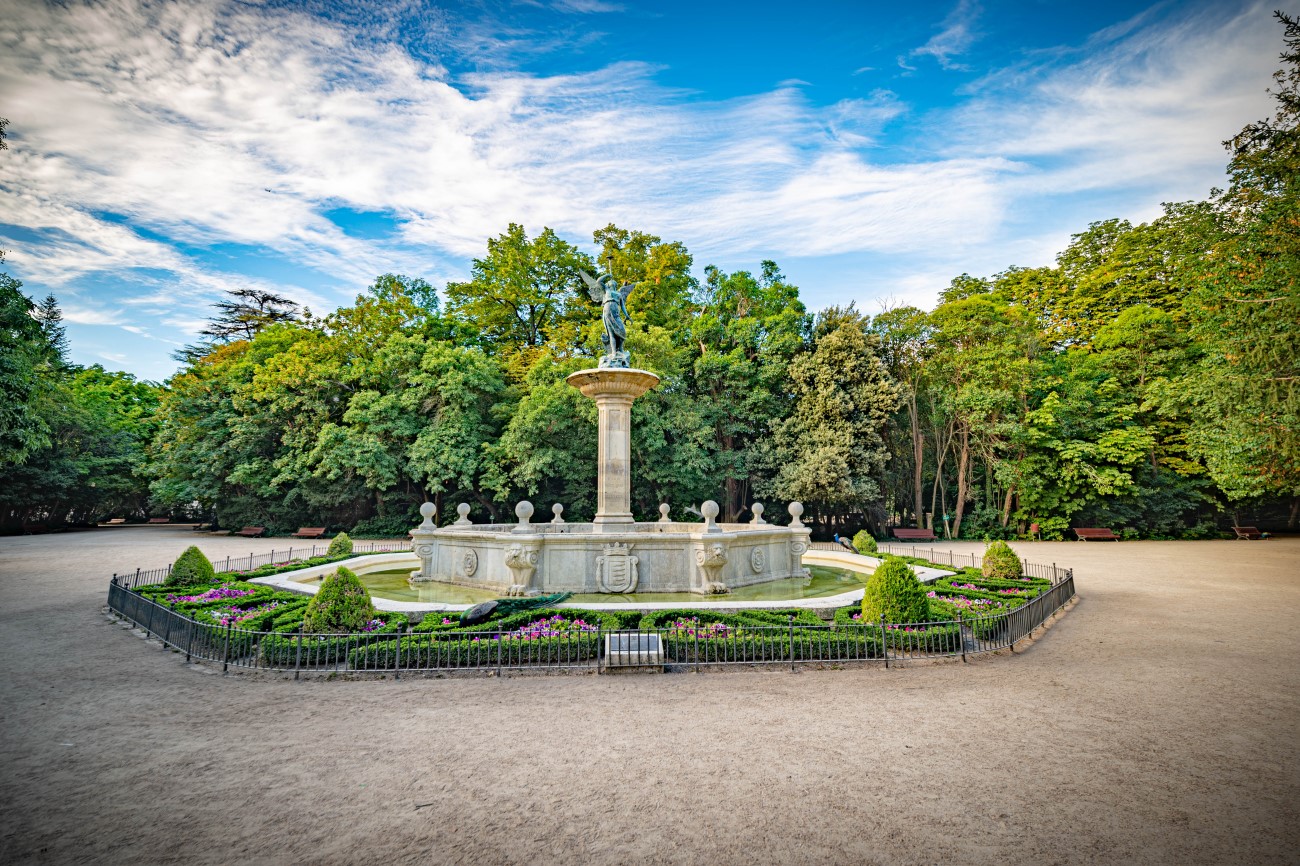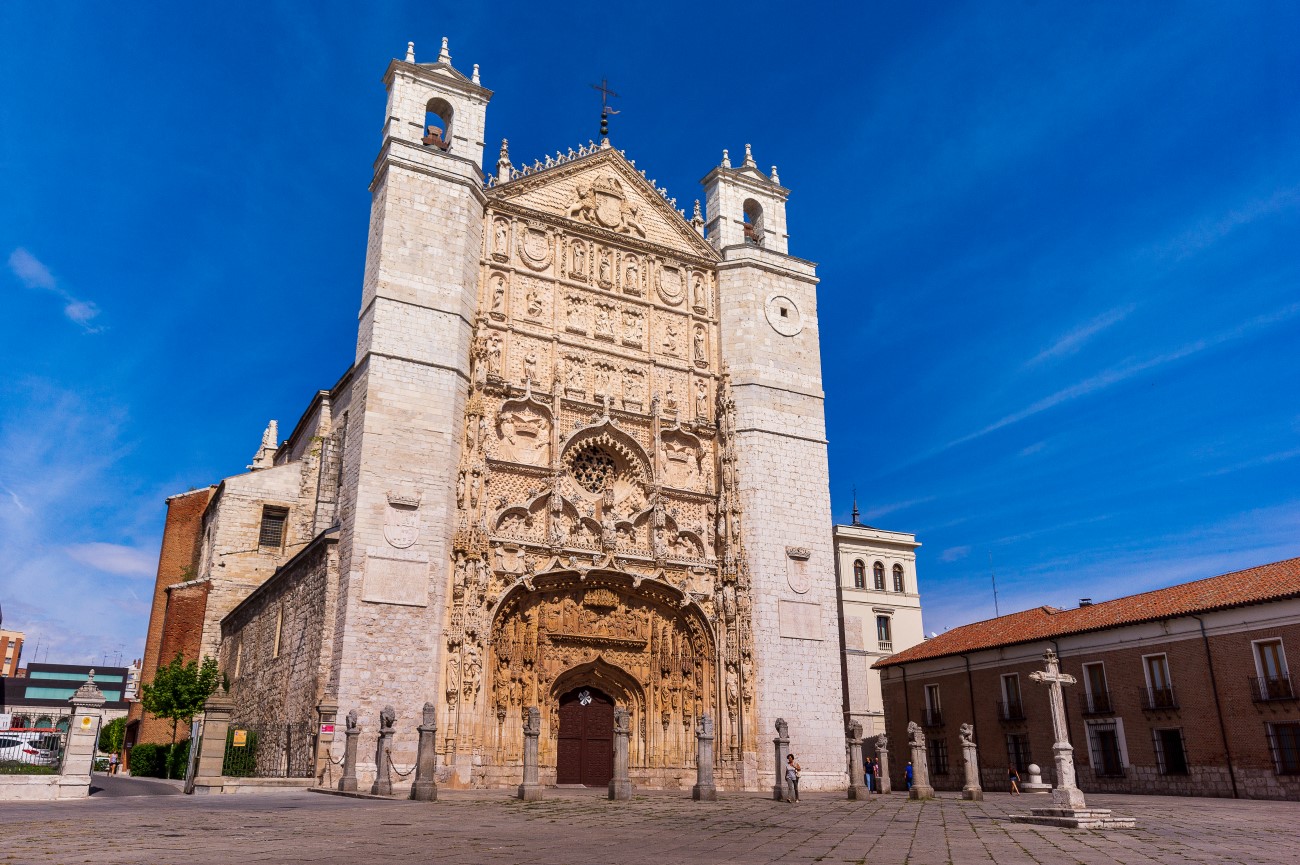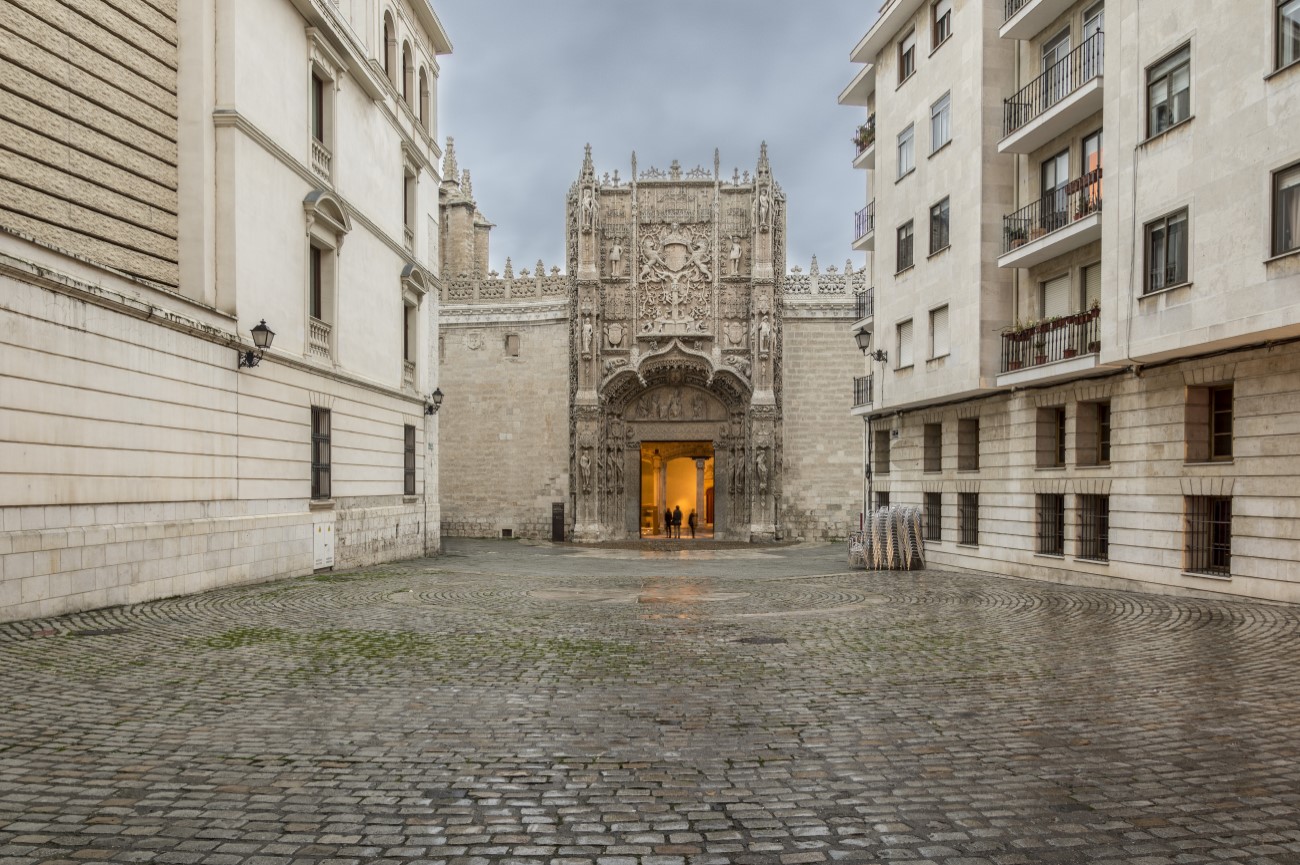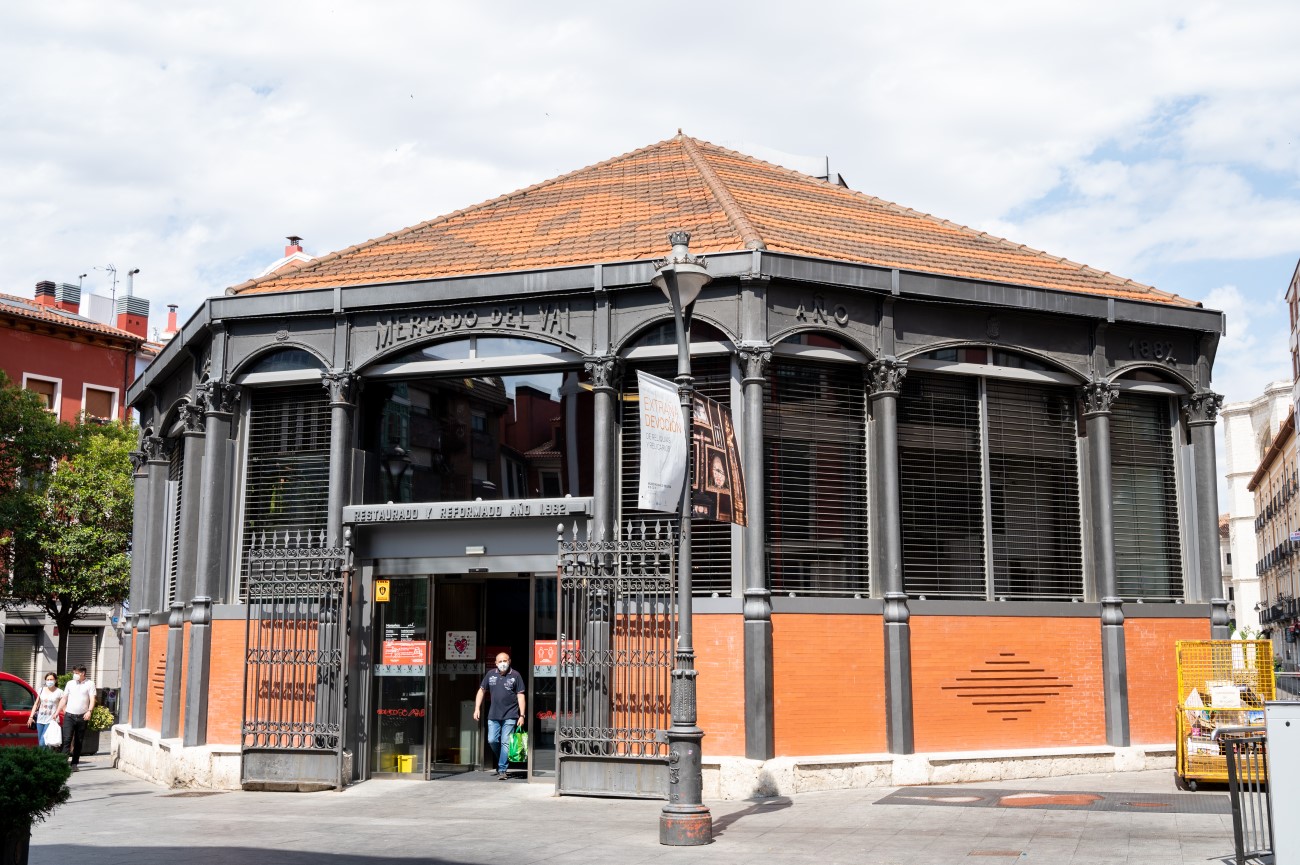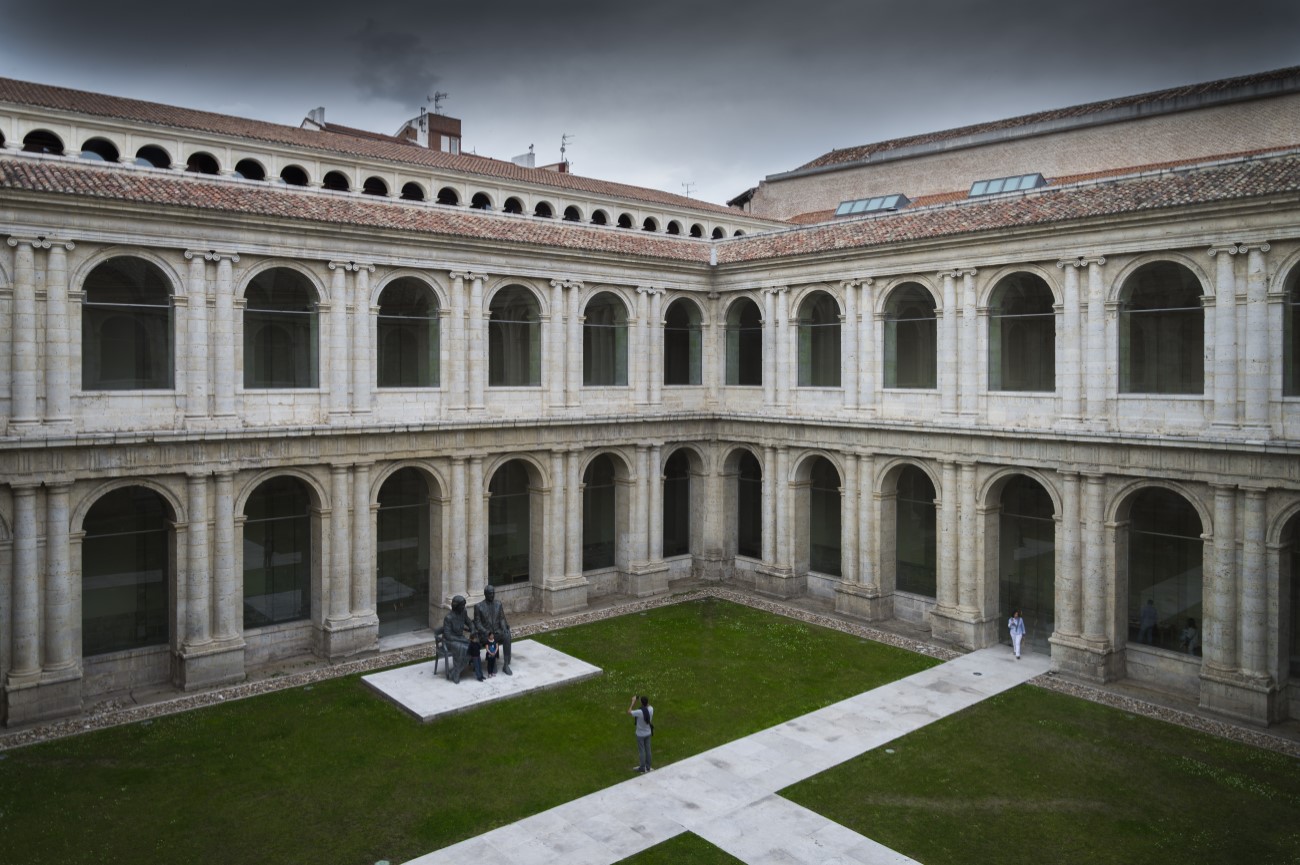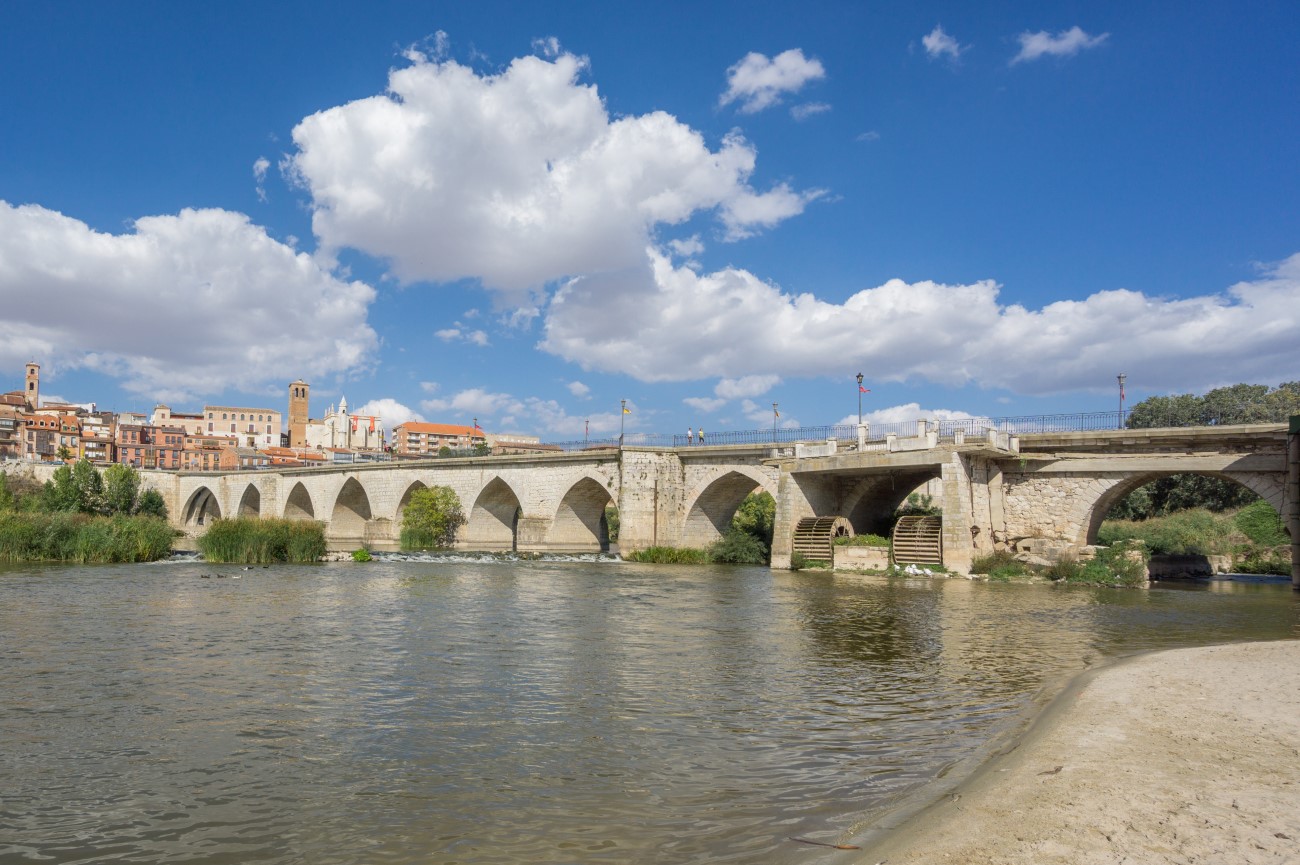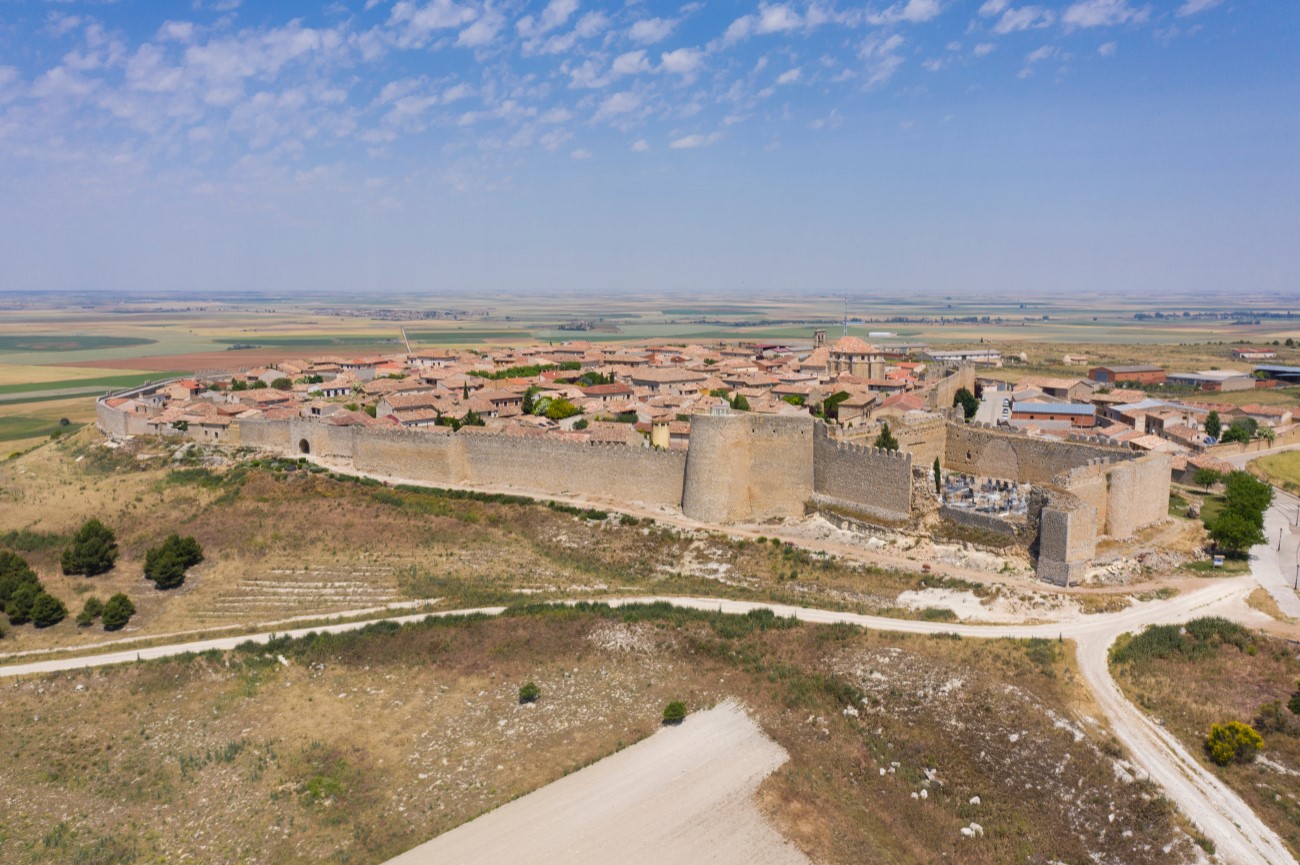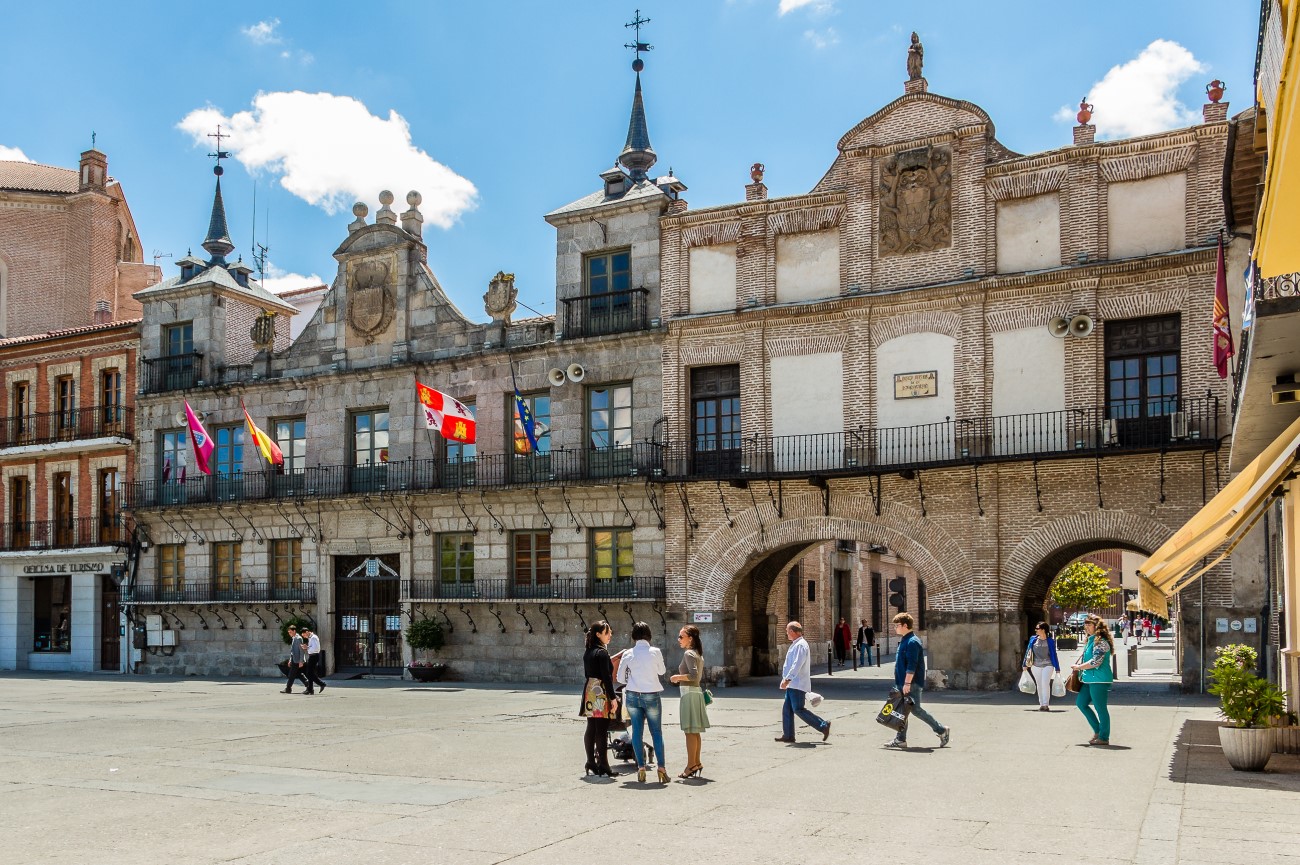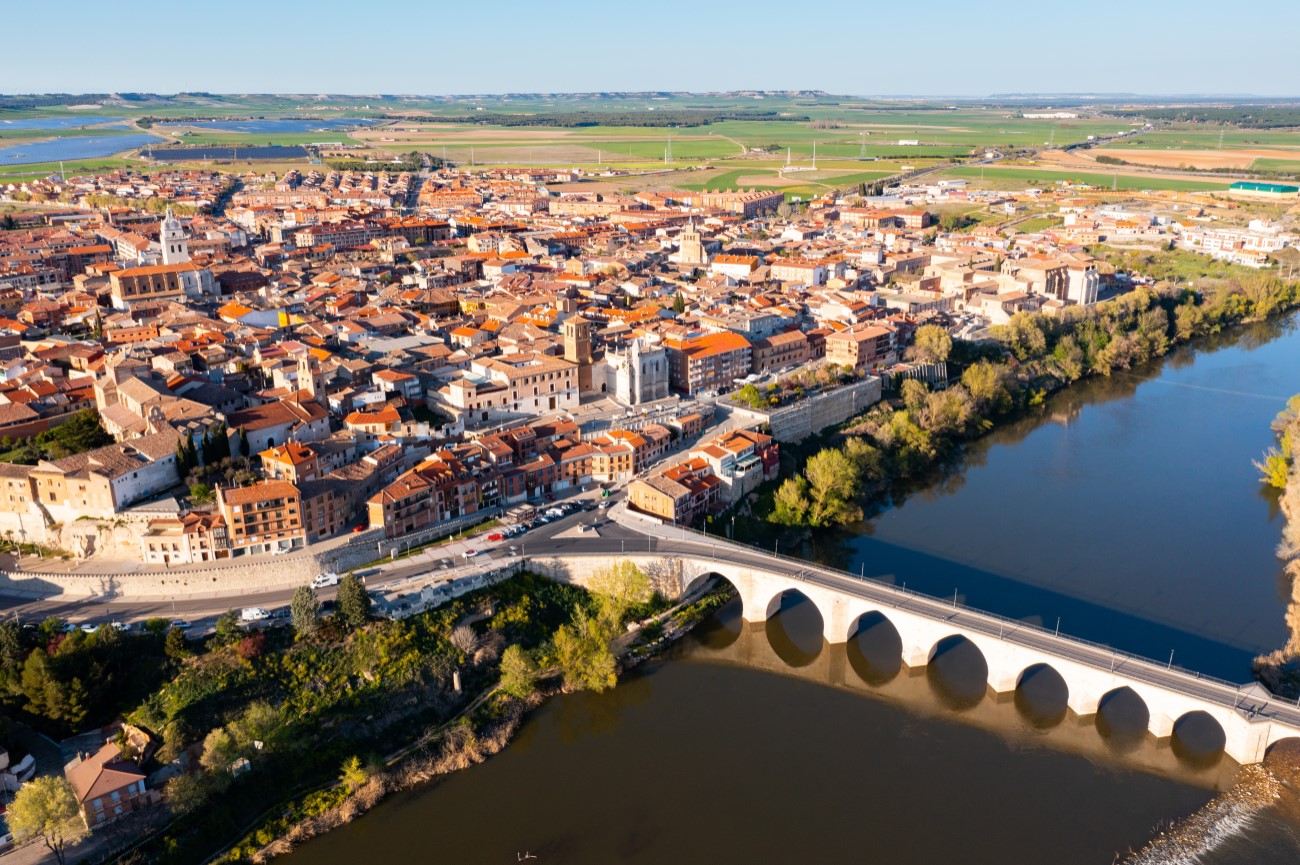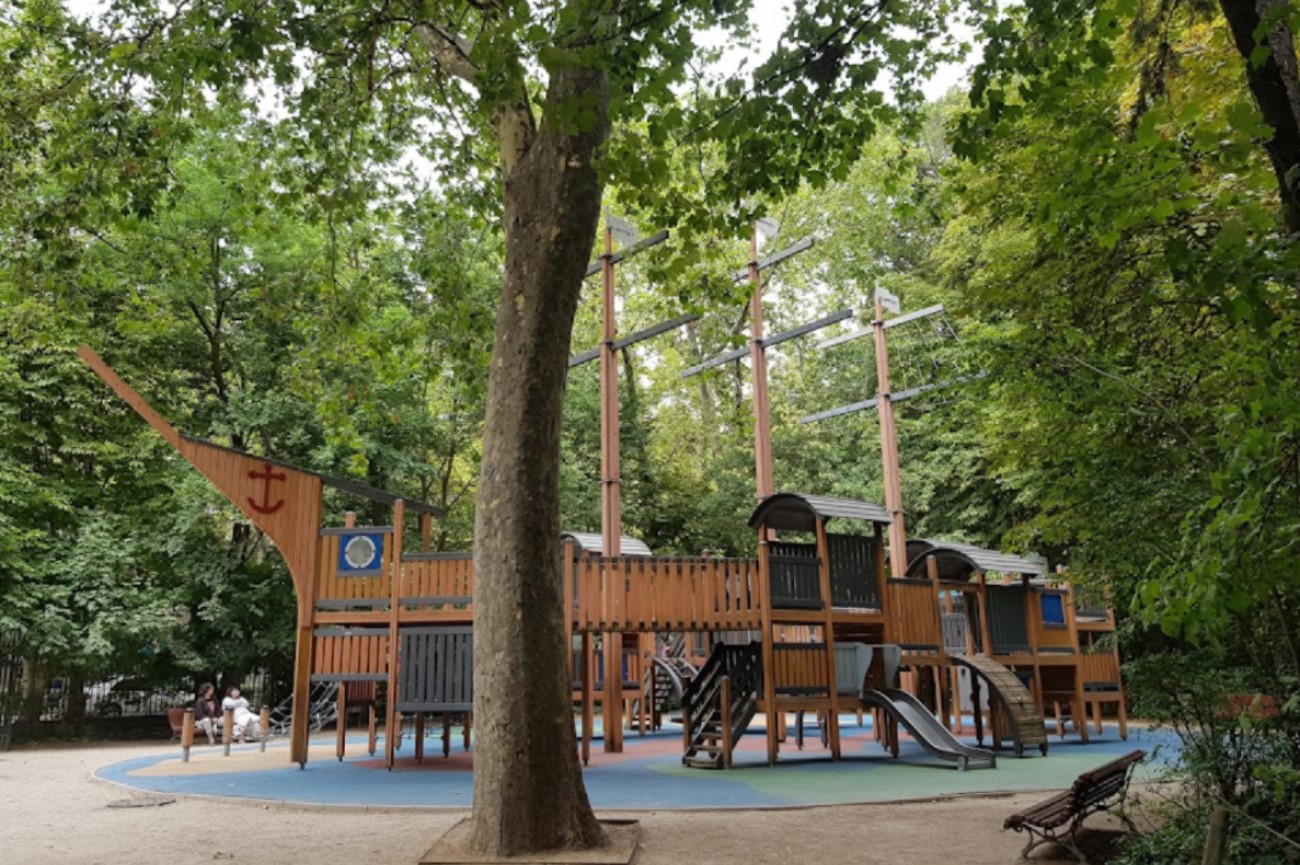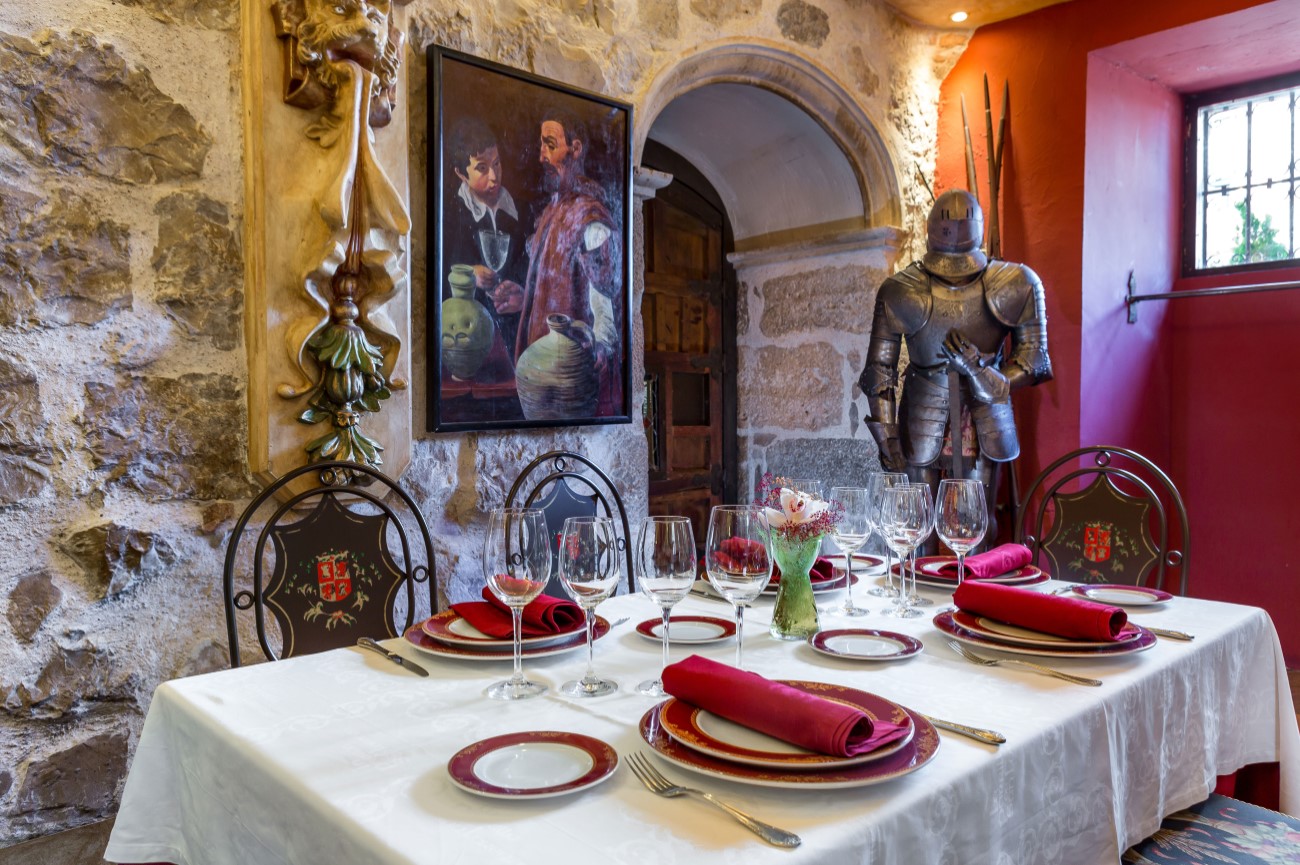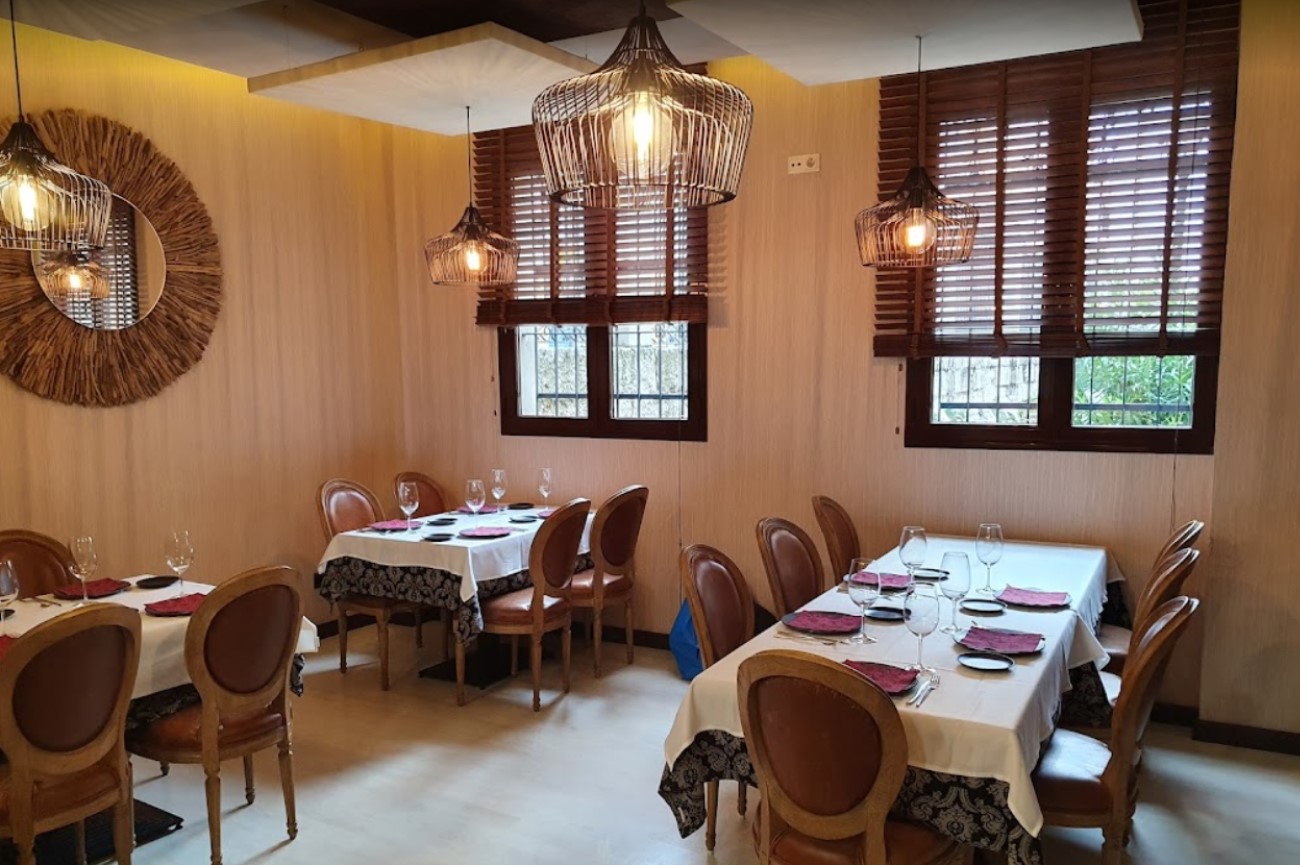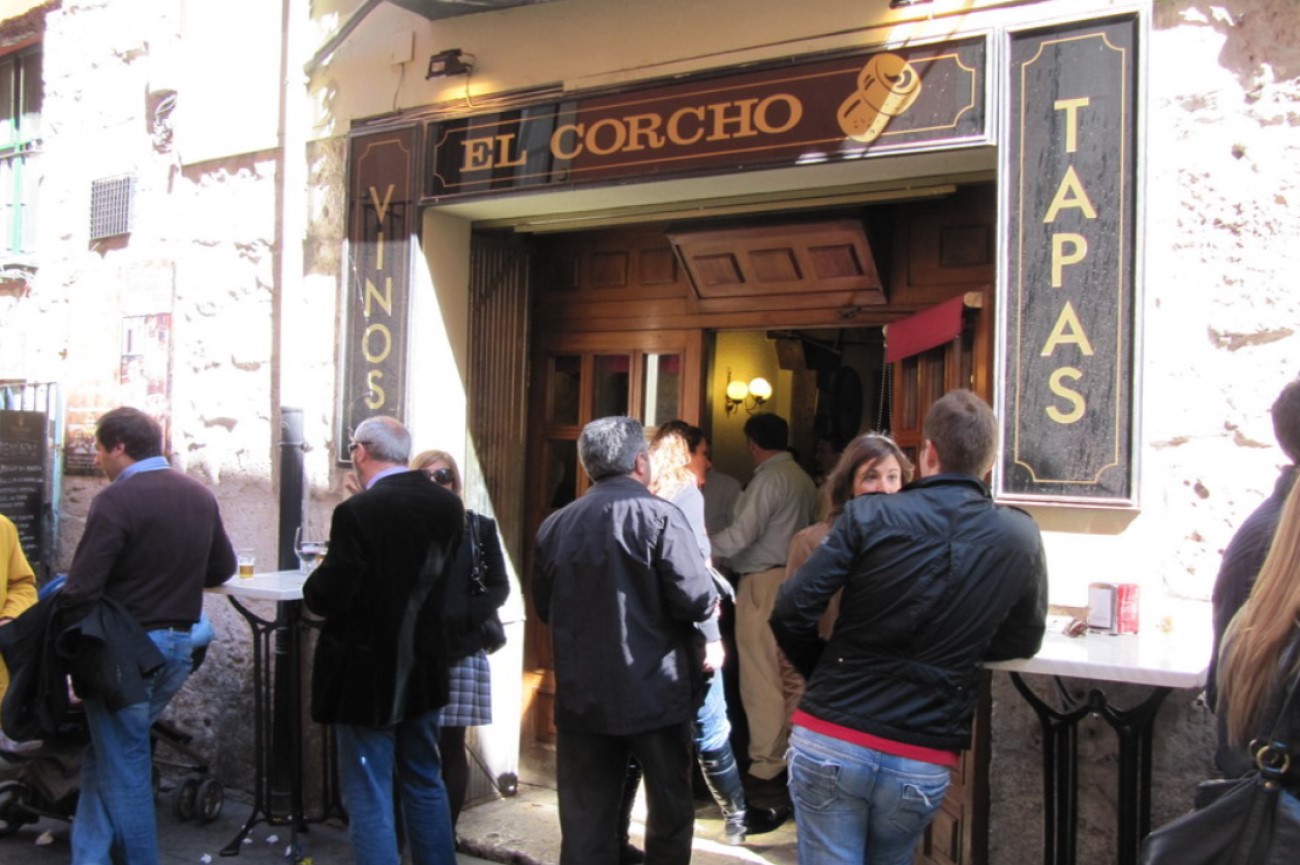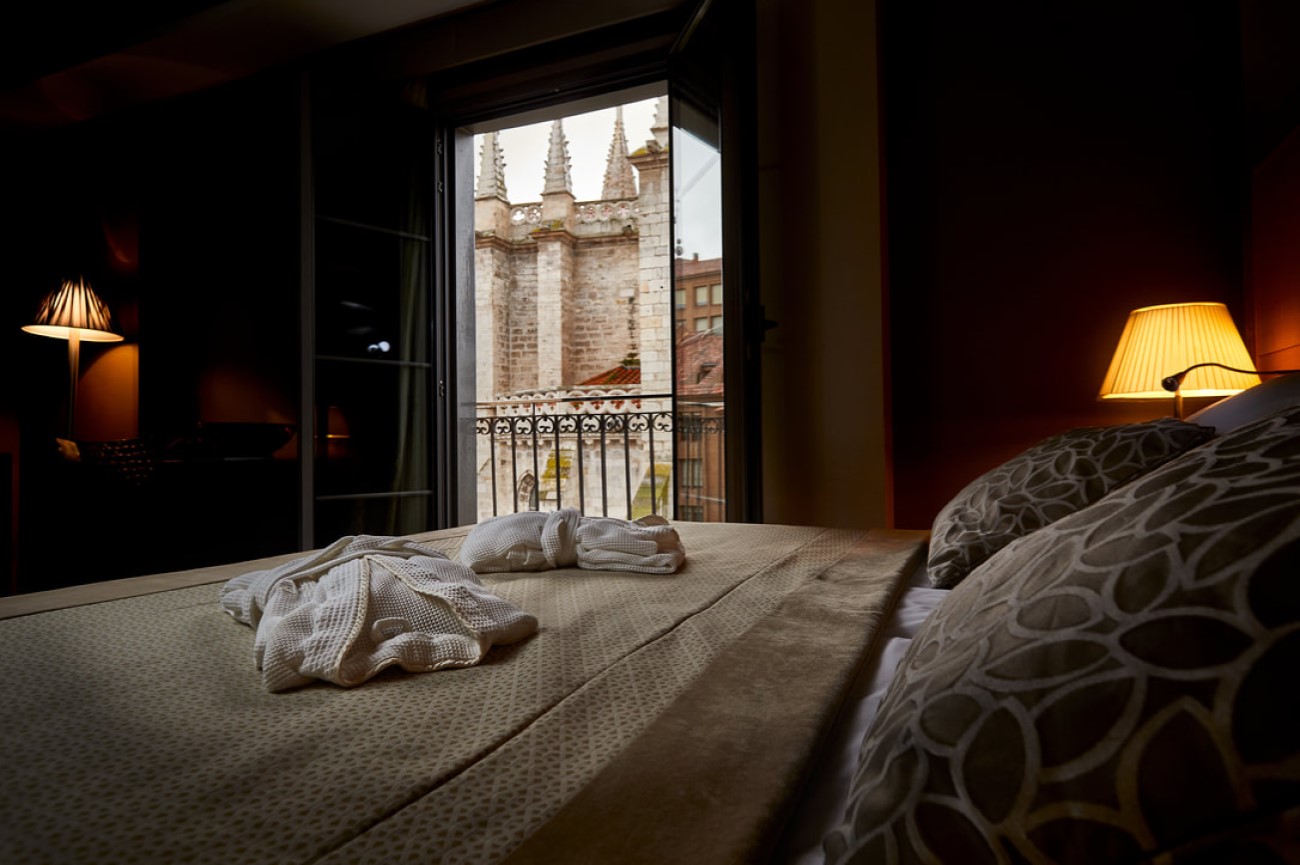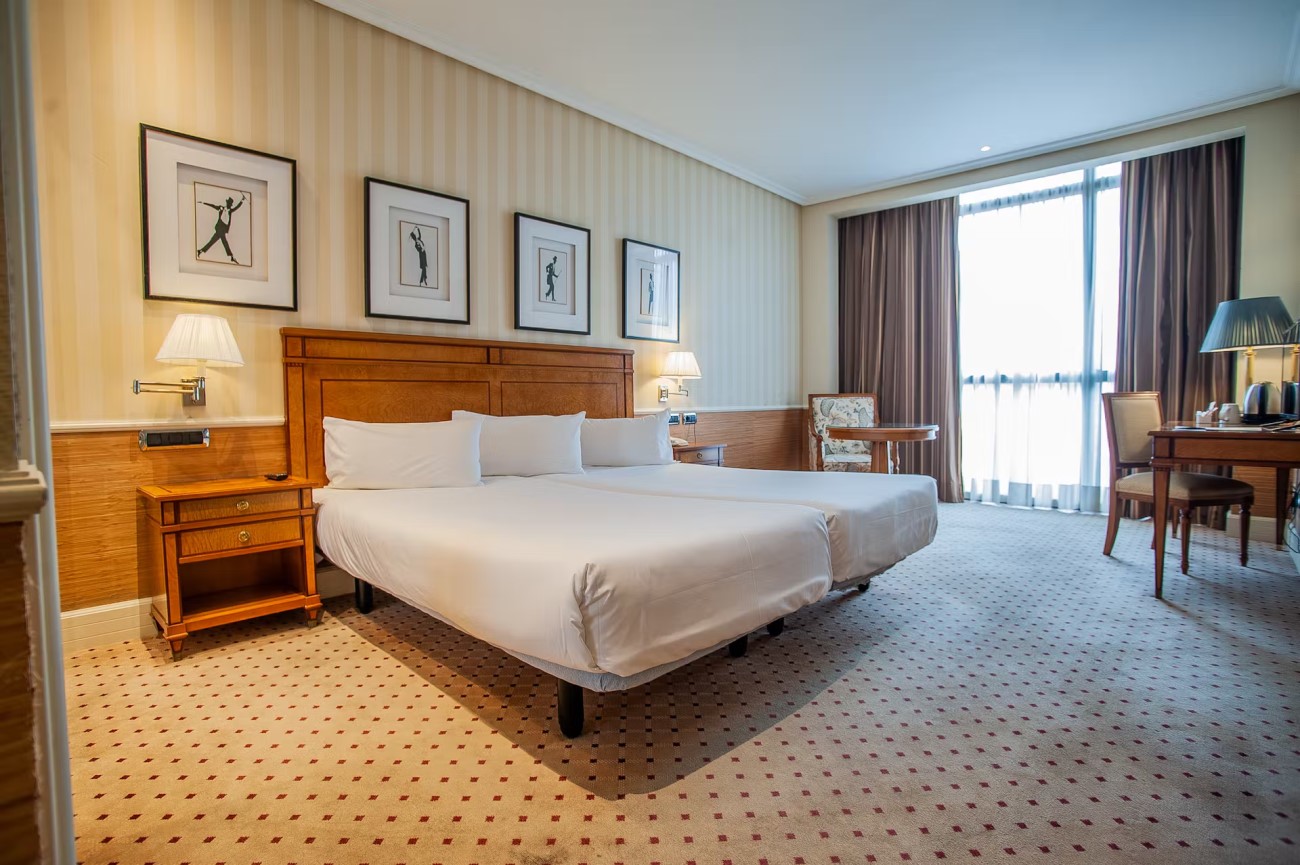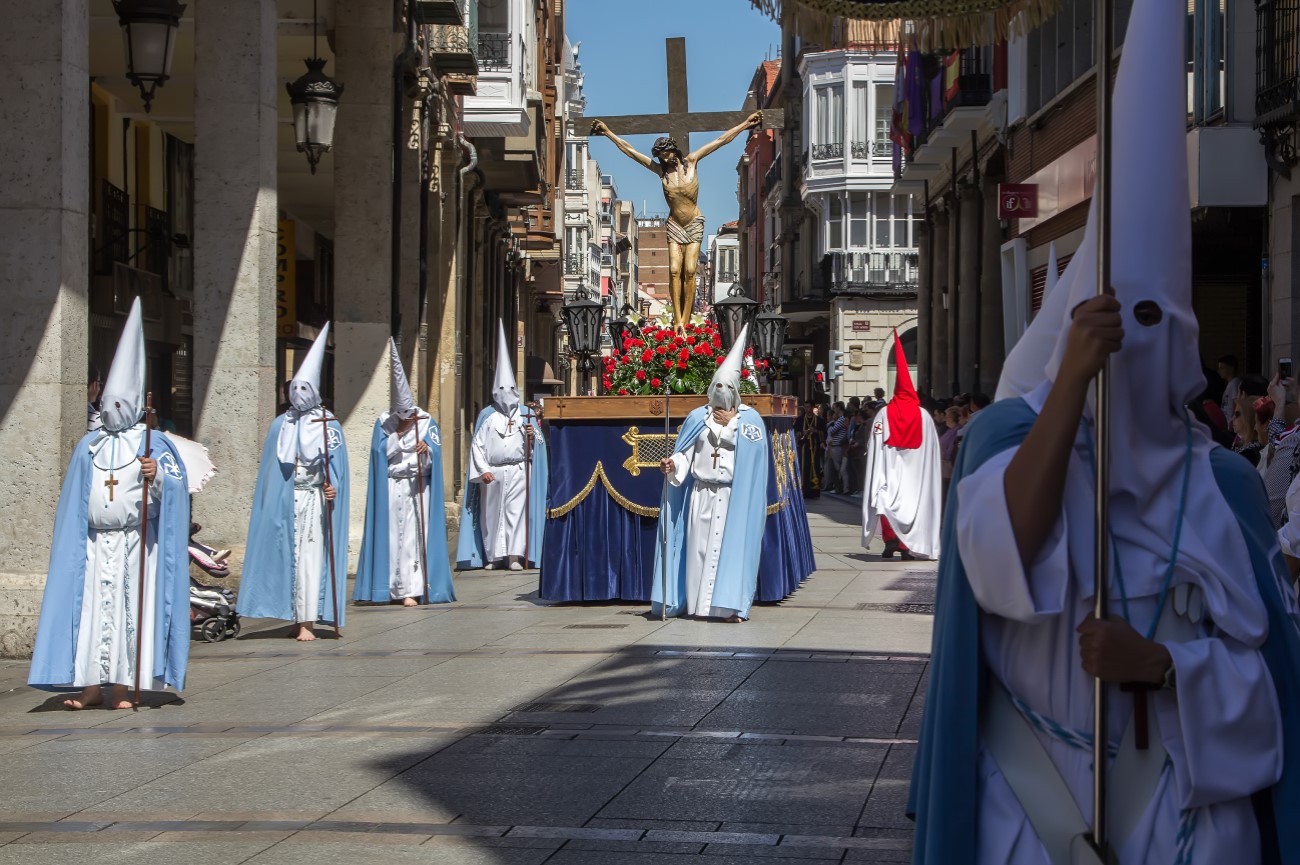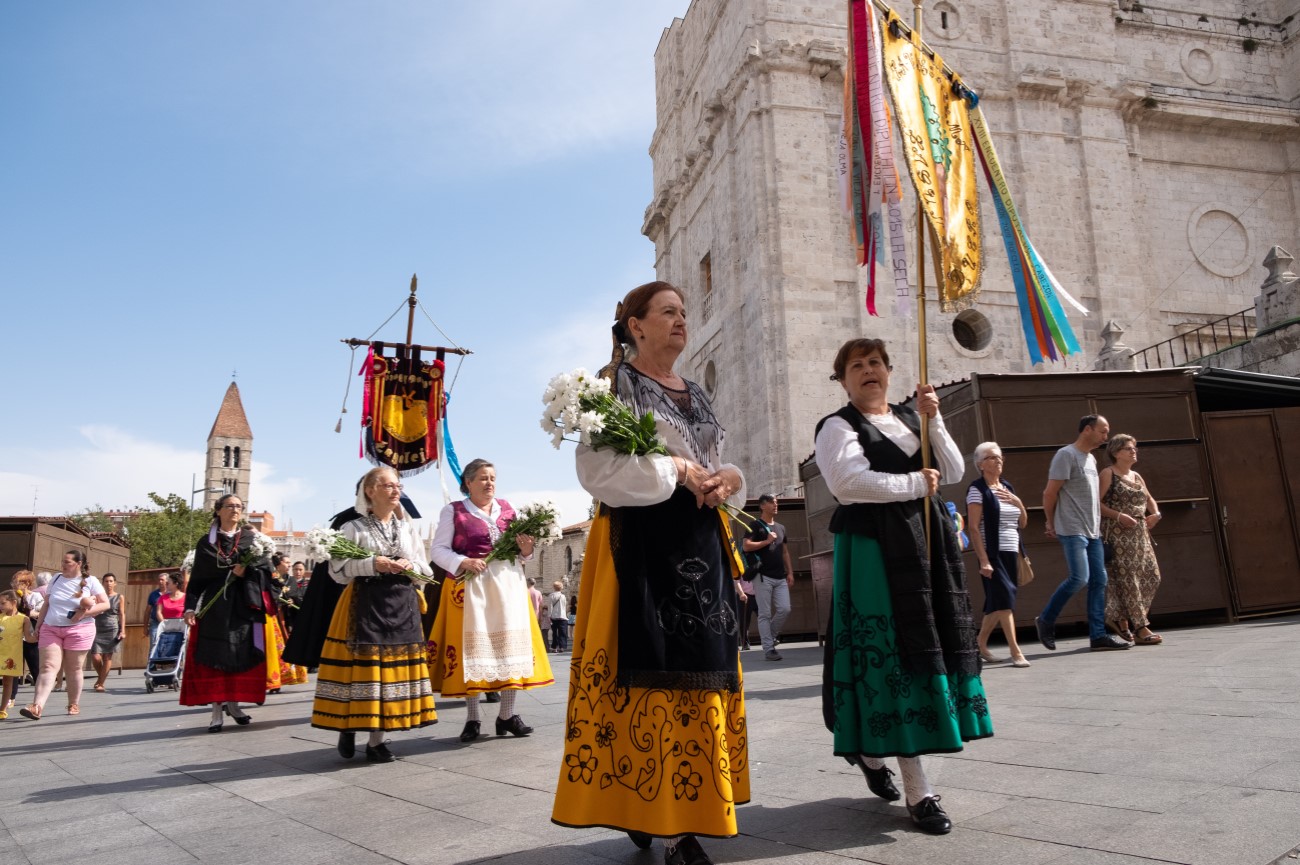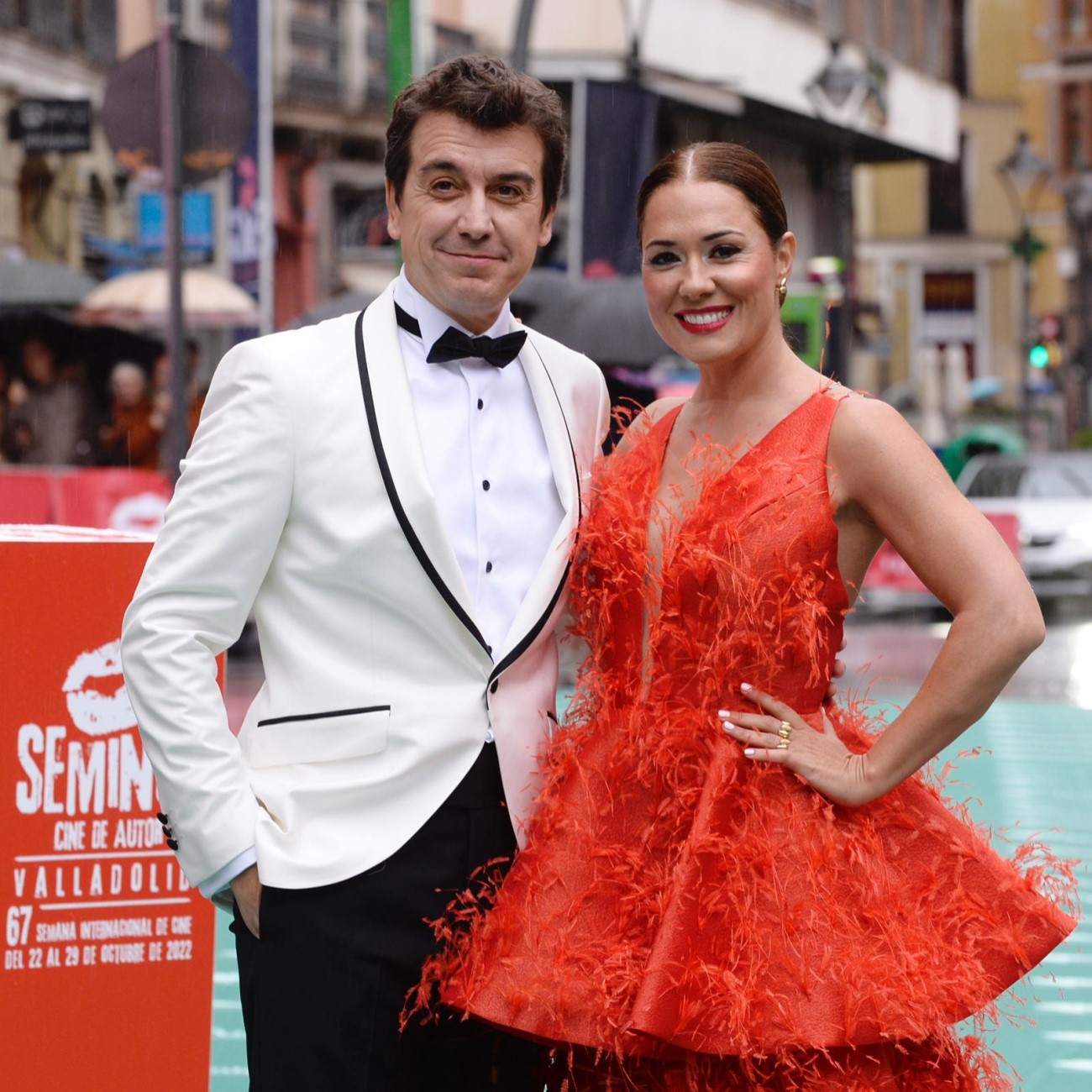Things to do in Valladolid, Spain - 2-day itinerary
Valladolid is a small and vibrant city a few miles north of the capital of Madrid. It is part of the Castile and León region and is famous for its impressive medieval architecture, with iconic churches like the Valladolid Cathedral and monumental squares like Plaza Mayor.
There are also museums dedicated to famous figures such as Cervantes and Christopher Columbus. After dark, Valladolid comes alive as the large student community fills the city’s bars and clubs.
Join us as we explore this historic city in our two-day itinerary. You’ll find all the top attractions in Valladolid, plus tips on where to stay and eat.
Day 1

Morning: Valladolid Cathedral
Start your day exploring one of the city’s landmarks, the Catedral Nuestra Señora de la Asunción. This incredible cathedral was built in the 16th century and designed by the famous architect Juan de Herrera, who also created the Escorial in Madrid. More recent additions include the facade, reconfigurated in the 18th century.
It is worth stepping inside to admire the church’s bold altarpiece created by Juan de Juní and the processional monstrance by Juan de Arfe featured in the attached museum. Guided tours last around 45 minutes and include a visit to the cathedral and bell tower (the tower is only accessible through guided tours). Alternatively, you can combine this ticket with the museum and extend your visit to two hours.
Santa Cruz Palace
Take a short walk up to the Palacio de Santa Cruz. The palace was built in 1491 to serve as the Colegio Mayor, and became the first Renaissance building in Spain. During your visit you’ll see a stunning inner courtyard with a guarded clock, a bookshop that belonged to the Cardinal’s College and an incredible back garden perfect for a morning stroll.
Casa-Museo de Colón
History buffs will love a visit to the Casa-Museo de Colón, a museum dedicated to the life of Christopher Columbus (known as Cristóbal Colón in Spanish). This iconic explorer died in 1506 in the city of Valladolid. The museum is located in the former house of Christopher’s grandson Diego Columbus and reveals every detail of his ancestor's life and explorations. Inside is a vast collection of items, from original old maps to interactive exhibits and models of his ships. There is even a tombstone in the courtyard, showing the exact spot where Colombus passed away.
Church of Santa María de la Antigua
Finish your morning with a visit to the Church of Santa María de La
Antigua. There's been a temple here since the 11th century, but the
building you see today is from the 14th century. During your visit, you
can explore the glorious interiors and gardens and capture the elegant
Romanesque tower, one of the few remaining features of the original
site. Around the church are a series of bars and restaurants where you
can stop for a drink.
Afternoon:
Casa de Cervantes
Miguel de Cervantes, one of Spain’s most famous authors, lived in Valladolid between 1604 and 1606, right when his most famous book Don Quijote de La Mancha, was launched. His 16th-century house is now a museum dedicated to his life. All the rooms were kept the same way as when the author lived here, featuring personal objects like his book collection, furniture and examples of his writing.
Parque Campo Grande
After visiting a few monuments, it is time to relax at the Parque Campo Grande, the biggest green space in the city. Here you'll find over 100 species of trees and flowers, along with fountains and ponds. Take a seat under a tree or go boating on the central lake. If you're lucky, you might catch a peacock or two roaming around.
Plaza Mayor
End your day in the heart of the historic centre at Plaza Mayor. This imposing square stands out with its striking red floor and buildings. Standing in the middle is the town hall, better known as the Casa Consistorial. The plaza is the perfect spot for an evening stroll or a drink in the surrounding bars. Many shows and concerts take place here throughout the year.
Day 1 - Valladolid Tour Map
Day 2

Morning: Plaza de San Pablo
Begin your second day with a visit to the Plaza de San Pablo. This square is an important architectural landmark. Here you can admire a series of iconic buildings such as the Palacio de Pimentel (the birthplace of King Felipe II), the Palacio Real (the seat of the Royal Spanish Court between 1601 and 1606) and Casa Museo José Zorrilla. Another dominating site in the square is the beautiful Iglesia de San Pablo. The church has one of the most impressive Isabelline Gothic facades in Spain.
Museo Nacional de Escultura
Close to the square is the Museo Nacional de Escultura. The museum occupies the 15th-century San Gregorio College and showcases some of Spain’s greatest sculpture collections, from stone statues to wooden sculptures and altarpieces. Highlights include the works of Alonso de Berruguete, Juan de Juní and Gregorio Fernández.
Mercado de Val
From the museum, take a walk down to Mercado de Val. This historic market has numerous little stalls selling fresh ingredients alongside restaurants and bars where you can grab a bite to eat. It's the oldest market in Valladolid, dating back to 1892.
Afternoon: Church of San Benito
Continue your tour of the city by visiting the Church of San Benito. This 16th-century building was erected above the remains of the city’s first fortress. The most striking characteristics include the octagonal columns and its stunning altarpiece.
Museo Patio Herreriano
Occupying a former monastery is the Museu Patio Herreriano, a contemporary art museum dedicated to post-World War II art. Here you can admire the works of Joan Miró, Antoni Tàpies, Salvador Dali and Jorge Oteiza.
Playa de Las Moreras
Spend the rest of the afternoon relaxing at Playa de las Moreras. Despite not being on the coast, Valladolid has this lovely stretch of sand on the bank of the Pisuerga River, where locals come to sunbathe and escape the summer heat. At night, head to the beach bar for some drinks and tapas.
Day 2 - Valladolid Tour Map
Day trips from Valladolid
- Urueña: This tiny village of less than 200 residents was declared a Historic-Artistic Site thanks to its medieval heritage. It’s about 50km west of Valladolid. While you're here, make sure to visit the Wall, the Castle and the Church of Santa Maria.
- Medina del Campo: Just 60km south of Valladolid is the town of Medina del Campo. Much bigger than Urueña (reaching 20,000 inhabitants), this town stands at 720 metres above sea level and has a long history. The most iconic site here is the 15th-century Castillo de la Mota, one of the most beautiful castles in Spain.
- Tordesillas: You might have heard the name of this town from the Treaty of Tordesillas, a treaty signed here in 1494 dividing the world between the Portuguese and the Spanish empires. This town is only a 35-minute drive from Valladolid. Its most iconic sites include the Church of San Antolin, the Monastery of Santa Clara and the Casas del Tratado.
Top things to do with kids in Valladolid
Valladolid is a small city, making it easy to explore with kids. Families will enjoy a visit to the Valladolid Science Museum. Set on an old flour mill, this interactive museum is spread across multiple floors dedicated to scientific discoveries, from chemical elements to fossil fuels and climate change. The space also includes a planetarium, where you can watch regular projections. Other kid-friendly sites include the Parque Campo Grande. Stretching for 115,000 square metres, the park offers plenty of shady paths and a lake where you can go boating.
In the summer, you can relax by the Playa de las Moreras set along the banks of the Pisuerga river. This urban beach was created in the 1950s and is still active today. Kids can play in the sand and enjoy a swim in the calm waters. Afterwards, you can take a stroll along the attached Parque de las Moreras.
Where to eat in Valladolid
Valladolid offers a diverse cuisine. One of the main specialities here is the lechazo (baby lamb). The meat is slowly roasted in a wood oven and paired with salad. Other iconic dishes include the tortilla de chorizo, the patatas a la importancia (potatoes coated in egg and flour, fried and bathed with a broth) and garlic soup, usually served in winter. Below are some of the best places to eat in Valladolid:
- La Parrilla De San Lorenzo: Housed within a 16th-century monastery, this restaurant stands out with its stone walls and ceiling frescoes. It focuses on high-end Castilian cuisine, including steaks and hearty stews. It's the ideal place to sample roasting lamb and suckling pig. Make sure to reserve ahead.
- MQ Martín Quiroga: It's worth booking a table to sample a meal at this tiny gastrobar. There is no fixed menu. Dishes change according to what is in season and available at the local market.
- El Corcho: Located on Calle de Correos, a street lined with tapas bars, this place stands out with its delicious toasts featuring a variety of toppings. The croquetas are a must-try.
Where to stay in Valladolid
- AC Hotel by Marriott Palacio de Santa Ana (5 stars): Located on the outskirts of Valladolid, this chic hotel is housed inside an 18th-century convent. The rooms have minimal decor, with some overlooking the park. Guests also have access to a traditional restaurant, a fitness room, a pool and a Turkish bath.
- Hotel Nexus Valladolid (4 stars): This modern boutique hotel is close to many of the city's main attractions, including the Plaza Mayor and the Church of Santa María de la Antigua. It features 27 rooms, some of which offer views to the church. Additionally, guests can take advantage of the wine bar offering regular tastings.
- Hotel Recoletos (4 stars): Just a few minutes from the Parque de Campo Grande, this four-star hotel stands out with its cosy courtyard and gardens. There's a restaurant on-site serving breakfast, plus a bar and meeting rooms.
Best time to visit Valladolid
April to October is the best time to visit Valladolid. Between July and August you'll catch the driest and hottest weather. This is also when most tourists come to visit. April and October have the highest rainfall, but the temperatures are still mild enough to explore the city. January is the coldest month here.
Valladolid Festivals
- Holy Week: Like in most of Spain, the Holy Week is one of the most important events of the year, and Valladolid is no exception. Semana Santa is celebrated between March and April, depending on the first full moon in spring, with processions of famous altarpieces taking over the city's streets.
- Our Lady of San Lorenzo: Starting on the first Friday in September, the fiestas of Our Lady of San Lorenzo begin with parades of various associations (peñas) and the mayor’s opening speech. During the day, you can explore the local fair and stock up on snacks sold in the street stalls, while the evenings are full of concerts and shows. The whole thing lasts a week.
- Valladolid International Film Festival: The Valladolid International Film Festival (Seminci) is among the most well-established film festivals in Europe. It starts at the end of October with screenings held at the Teatro Calderón.


